[/caption]
The stakes could not be higher for the Russian Soyuz rocket now poised at the launch pad at Baikonur in Kazakhstan and which will loft the next trio of space flyers to the International Space Station on Sunday, Nov. 13. This is the first flight of a manned Soyuz rocket since the Space Shuttle was retired in July and the subsequent failure of an unmanned Soyuz booster in August of this year.
The booster was rolled out to the pad on Friday (Nov. 11) and the very fate of the Space Station and the partners $100 Billion investment hinges on a successful blastoff of the venerable Soyuz – which dates back to cosmonaut Yuri Gagarin and the inauguration of human spaceflight 50 years ago. This launch must succeed in order to keep a human presence aboard the ISS and comes in the wake of an upper stage failure days ago that left Russia’s ambitious Phobos-Grunt Mars mission stranded in Earth orbit and potentially doomed. See the Soyuz rollout video and pictures below
The Soyuz rocket and spacecraft were rolled out on a rail car at Baikonur
Video Caption – Rollout of Soyuz TMA-22 spacecraft and booster to Baikonur launch pad in Kazahkstan.
Following the August 24 launch failure and crash of a Soyuz rocket carrying the Progress 44 cargo resupply vehicle to the ISS, Russia’s manned space program was grounded because the third stage of the Soyuz rocket which malfunctioned is virtually identical for both the manned and unmanned versions.
Since NASA was forced to shut down the Space Shuttle program, the Russian Soyuz rocket and capsule are the sole method of transport to the ISS. Thus, American astronauts have no choice but to hitch a ride with the Russians.
No American replacement spacecraft will be ready for humans until 2014 at the very earliest. And significant NASA budget cuts are likely to delay the introduction of the proposed “space taxis” by several more years.
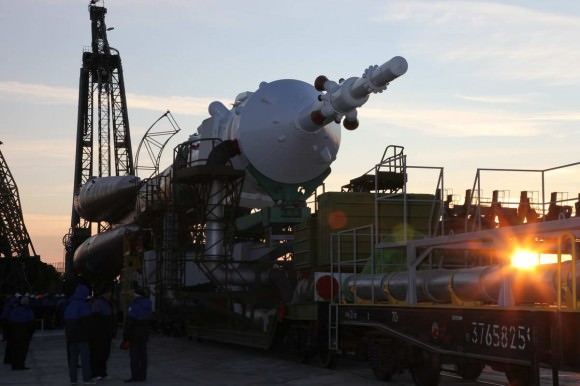
Liftoff off the three man crew aboard the Soyuz-TMA 22 capsule from the Baikonur Cosmodrome in Kazakhstan is slated for 11:14 p.m. EST Sunday Nov. 13 (11:14 a.m. Baikonur time Monday, Nov. 14) aboard the Soyuz TMA-22 spacecraft.
Originally, the launch of the Soyuz TMA-22 crew had been scheduled for September 22 but was immediately put on indefinite hold following the August 24 crash.
Russia promptly announced the formation of a special state commission to investigate the failure, which rapidly traced the malfunction to a clogged fuel line and instituted fixes and stricter quality control measures.
Fortunately, the program got back on track 10 days ago when the Soyuz rocket for the unmanned Progress 45 cargo ship successfully blasted off from the Baikonur Cosmodrome on Oct. 30, 2011 and docked two days later at the ISS.
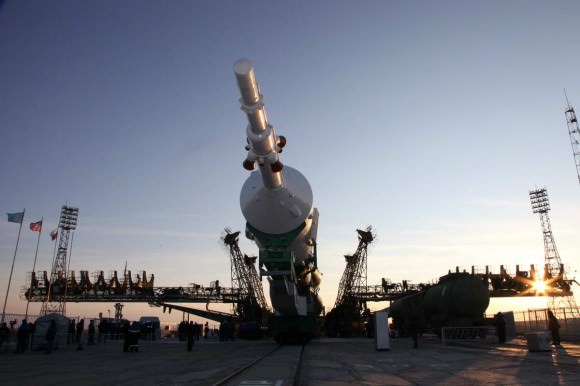
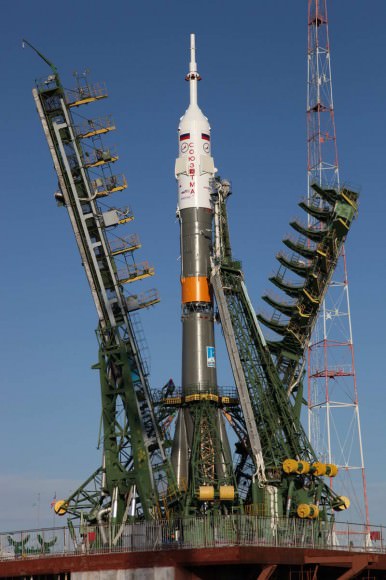
The international trio of new ISS residents consists of Expedition 29 Flight Engineer Dan Burbank from NASA and Anton Shkaplerov and Anatoly Ivanishin from Russia.
After a 2 day chase, they are due to link up with the ISS when their spacecraft docks to the Poisk mini-research module at 12:33 a.m. Wednesday.
When Burbank, Shkaplerov and Anatoly Ivanishin dock they will join the other trio of Expedition 29 crewmembers already aboard the ISS; Expedition 29 crewmates Commander Mike Fossum (NASA) and Flight Engineers Satoshi Furukawa (Japan) and Sergei Volkov (Russia) – and temporarily restore the ISS to a full complement of 6 crewmembers.
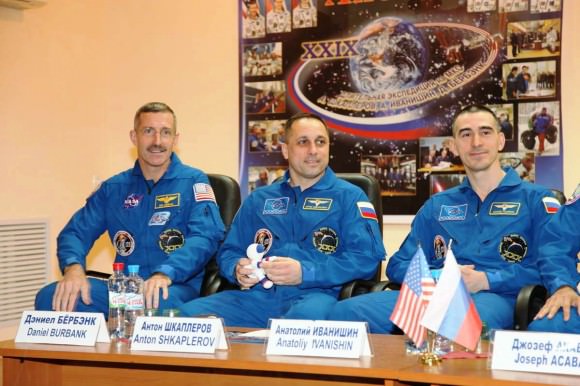
But the full ISS staffing will be short-lived, because Fossum, Furukawa and Volkov will hand over all ISS duties to the new crew and undock their Soyuz TMA-02M capsule from the Rassvet research module on Nov. 21 and depart for Earth reentry and landing in Kazakhstan hours later.
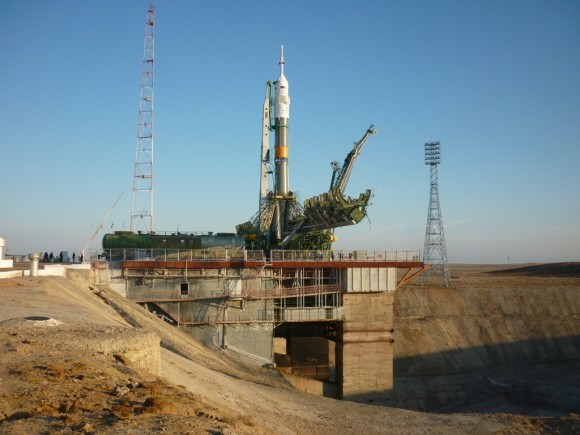
The new crew of three must reach the ISS before the current trio departs or the ISS would be left unmanned for the first time in over 11 years.
Read Ken’s continuing features about Russian Space Programs including Soyuz, Progress, Phobos-Grunt and Soyuz in South America starting here:
Success ! Launch Video of Crucial Russian Rocket to ISS puts Human Flights back on Track
Russians Race against Time to Save Ambitious Phobos-Grunt Mars Probe from Earthly Demise
Russia’s Bold Sample Return Mission to Mars and Phobos Blasts Off
Video Duet – Soyuz Debut Blast off from the Amazon Jungle and Rockin’ Russian Rollout !
Historic 1st Launch of Legendary Soyuz from South America
Russian Soyuz Poised for 1st Blastoff from Europe’s New South American Spaceport

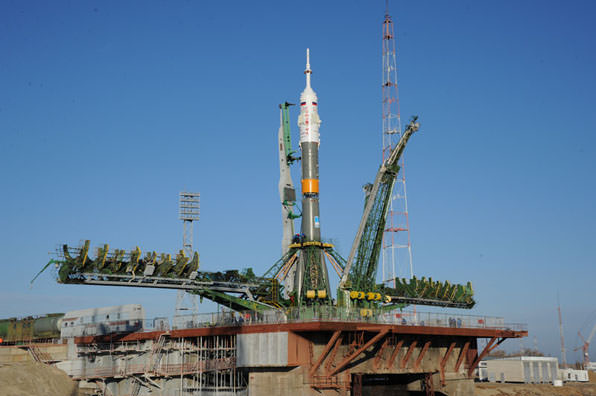
Don’t forget to pee in the woods, guys!
As I heard it, the claim is that the russian tradition of peeing on or by a wheel of the transport vehicle for good luck (and probably, em, “clear” skies with the excitement and g’s) has been adopted by visitors.
On the wheel? I thought they scampered into the woods to do it.
Good point raised, full ISS crew complement hinges on the greater man capacity of the CCDev2 and MPCV crafts.
Both seems to be headed for a 2017 introduction:
“The panel notes CCDev is transitioning away from the initial Space Act Agreements that brought emerging providers, along with traditional aerospace participants, to the program and toward more traditional development contracts. Those agreements, while giving NASA greater insight into the development, will in turn transition into service agreements intended to initiate launches of astronauts to the International Space Station by late 2016.”
But that was before the delay raised in that same article:
“President Barack Obama’s 2012 budget request seeks $850 million in annual funding for the initiative through 2016, though the overall program cost has not been identified. In the meantime, Congress has yet to agree on an agency spending plan that anticipates flat funding of $18.72 billion annually through the same period, despite new pressures from the Space Launch System and the over-budget James Webb Space Telescope.”
Seems the current administration has supports CCDev2 fully: “Currently, $500 million is allocated for human spaceflight taxis, but NASA has asked for an $350 million to keep the programs on schedule.”
With Congress the program is threatened to be delayed beyond the new target of 2016.* Hopefully the ISS will see an extension to 2025 instead of the current 2020 retirement, or there won’t be many years with full crew!
———————
* Whoever reinstated “business as usual” (well) for CCDev and let ~ 3 years slip (“late” 2016) from what some providers claim they can do, 2014, should be skewered by space advocates.
Given the massive investment and effort put into building the ISS, it just seems silly to throw it away in 2020. They probably will extend it though. Right now, the ISS is the biggest reason to go to space, if that goes away, it’ll be a step in the opposite direction.
Not to mention there won’t be a destination for cargo supply missions, that’ll certainly stifle the NewSpace businesses that are relying right now on CCDev contracts. Unless of course Bigelow complexes come out in a big way.
CORRECTION: No, I misunderstood, I just read the ISS will get back to a crew of 6 by staggering the Soyuz launches to catch up.